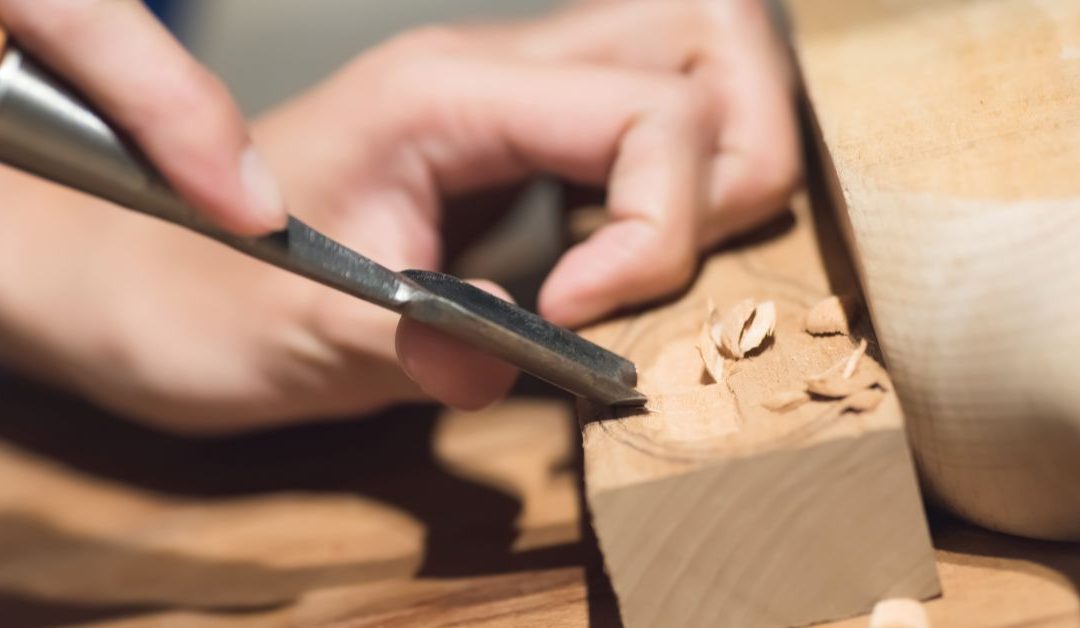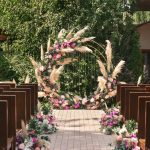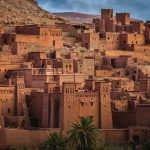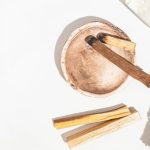Wood is a very important part of Moroccan culture. It’s used in many different things that people use every day. Different types of wood have different meanings and are important in different ways. In this article, we will explore how people in Morocco use different types of wood and learn about their uses. We will find out why wood is so special to the people of Morocco. The trees in Morocco give people access to different kinds of wood, and each type of wood is good for different things like making furniture or art. By learning about the different types of wood in Morocco, we can understand why it is so important to the people there.
Cedarwood
People in Morocco have been using cedarwood, a special kind of wood, for a very long time. People use it to make furniture, houses, and carvings. It’s important to Moroccan culture because it represents wealth and nobility. They believe that it protects them from bad things and brings good luck, especially in business. You can often find it near the entrances of homes and businesses as a sign of prosperity.
In Morocco, you can see cedarwood carved into beautiful designs on doorways. This shows how much they value their traditional crafts and skills, even with modern materials available.
Cedarwood is a strong symbol of power and importance in Moroccan culture.
Olivewood
Uses: Olivewood has been much used in Morocco for centuries, as it has many practical and decorative applications. From furniture to kitchen utensils, olivewood has been a part of Moroccan daily life.
Symbolism: It has a special symbolism in the culture, representing strength and resilience. It is often seen as a symbol of faith, hope, and stability.
History: People have been using cedarwood in Morocco since at least the 13th century. They have used it for both religious and secular purposes and they still see it as a traditional material.
Uses
People in Morocco have been using olivewood, a special type of wood, for a long time. It’s known for being strong and beautiful, and craftsmen can shape it the easier way.
People in Morocco use olivewood to make many things, like furniture, cooking utensils, and decorations. It’s not only about the practical use though. Olivewood has cultural meanings too. It represents protection, good health, luck, fertility, and harmony among people.
Every item made from olivewood is unique because of its color and patterns. This makes them even more special and important in Moroccan culture.
Craftsmen in Morocco make all sorts of things from olivewood, like jewelry boxes, flutes, and carvings on walls. They use traditional techniques that have stayed through generations. They take pride in creating beautiful pieces from this special wood.
Symbolism
In Moroccan culture, olivewood is very special and has a lot of meaning. People use it in rituals and traditions to protect themselves and bring good luck. It’s also connected to fertility, health, wealth, and getting along with others.
Olivewood is easy to shape and can turn into many different things. Each piece is unique because of its special color. You can find olivewood everywhere in Morocco. Like in flutes passed down through families, carvings on walls, or jewelry boxes that represent safety and luck.
Olivewood is important in Moroccan culture because it symbolizes more than its physical form.
History
Olivewood has a long history in Morocco, dating back thousands of years. Ancient Berber tribes used olivewood for rituals and crafts, believing it brought good luck and protection. People used it in ceremonies for fertility and harmony. Skilled artisans carved olivewood into beautiful objects like jewelry boxes and flutes. Each piece is unique and has a special meaning of protection and fortune. Olivewood is not only an object, but a part of Morocco’s cultural identity too.
Walnut
People love olivewood because of its beautiful golden color. They use it to make furniture and carvings in Morocco. Another important wood in Moroccan culture is walnut. It is strong and durable, perfect for making furniture and decorative items. Walnut has natural oils that are good for the skin and can help with skin conditions like eczema. It has antiseptic properties that can help heal minor wounds. Walnut is much valued in Moroccan culture because of these benefits. Now let’s talk about juniper wood.
Juniper
Juniper is a very important wood in Moroccan culture. People use juniper wood in many different ways, both for practical reasons and as a symbol. In fact, about 85% of woodworking projects in Morocco use juniper wood!
Here are five ways that people in Morocco use juniper wood:
- Carpenters use juniper to make cabinets, furniture, frames,, and other household items.
- Juniper is a popular choice for making musical instruments like lutes and ouds.
- In spiritual beliefs, the juniper is a symbol of strength and protection. Burning juniper berries can keep away bad luck and illness.
- When building a house, Moroccans often put pieces of juniper at the entrances for good luck.
- In traditional medicine, people use crushed juniper leaves to treat stomach pain and reduce swelling.
Juniper wood is very versatile and has a lot of meaning in Moroccan culture. It is as important as palmwood!
Palmwood
In Morocco, Palmwood is a special material used for many things like furniture, utensils, and musical instruments. It’s strong and resilient, so it’s great for traditional crafts and art. People believe it brings good luck and protects their homes. It has a spiritual meaning and thought to bring positive energy when used in building.
Uses Of Palmwood
Palmwood is a very special kind of wood in Morocco. People harvest palmwood in a way that doesn’t harm the environment, so it’s a good choice for making traditional crafts. Artisans use palmwood to make furniture, bowls, jewelry boxes,, and even musical instruments. The wood has a unique texture that makes it look and feels beautiful. It’s strong, so the things made with it can last a long time. Craftspeople can create intricate designs with palmwood and still keep its natural beauty. That’s why palmwood is so popular among traditional crafters in Morocco.
Symbolism Of Palmwood
Palmwood has been a staple in Moroccan culture for centuries, and even today it remains revered amongst artisans.
Not only because of its beauty or durability but because of the sacredness associated with this special wood too.
Many people believe that using palmwood can bring good luck and prosperity. This belief has social importance beyond making things with palmwood.
This symbolism lends itself to creating pieces that are extra meaningful and oftentimes unique in their own right.
Often, these works become passed down through generations as symbols of family heritage and legacy.
As such, palmwood continues to be an important symbol of tradition within Morocco’s craft community.
Lemonwood
Lemonwood has been a staple in Moroccan culture for centuries and is much regarded by craftsmen. It has unique properties that make it ideal to use when crafting furniture, boats, and other intricate items. The wood itself is light yellow and can range from soft to hard depending on its age.
| Properties | Uses |
| Light Yellow Color | Crafting Furniture & Boats |
| Soft-Hard Varies On Age | Decorations & Accessories |
| Healing Properties | Intricate Carvings |
People have used the lemonwood tree in traditional medicine for a long time because they believe it has healing powers. In Morocco, people believe it brings good luck and protects against bad spirits. They hang pieces of wood over doorways or keep them as charms. Lemonwood is much believed to help with headaches and stomachaches.
Besides its spiritual and medicinal uses, lemonwood is important for Moroccan crafts. It is lightweight but strong, so artisans can make detailed decorations and accessories from it. They create things like pipes and carved chairs. Lemonwood has been a part of Moroccan culture for many years.
Cypress
Cypress wood is much respected and valued in Moroccan culture. People have used it for a long time because it is strong, beautiful, and has a special meaning. Carpenters use cypress to make furniture with detailed designs like carved chairs and ornate doors. It has a symbolic significance, representing eternity and protection. In ancient times, cypress was even offered to the gods. People believed that using cypress in homes brings protection and a pleasant scent. It was a way to show wealth and power through artistry. Nowadays, both locals and tourists love cypress and use it for various purposes, like tables, beds, wall hangings, and sculptures. Whatever they choose, they know it will last a long time. Cypress wood is still cherished and considered important in Moroccan culture.
Mahogany
Having discussed the importance and symbolism of cypress, we now turn our attention to mahogany. This species of tree has been an integral part of Moroccan culture for centuries and is still held in high regard today.
Mahogany is a special kind of wood that turns into furniture and ships. It isfamous for its strong red color and ability to resist rot, which makes it a popular choice for craftsmen. In traditional Moroccan homes, you can find beautiful pieces made from mahogany that look nice and work well.
In Morocco, people see mahogany as a symbol of strength and stability because it lasts a long time and doesn’t get damaged that fast. In the past, mahogany was a luxury because only rich people could afford to have things made from it. Even today, people associate mahogany with good things and value it.
Moving on then, oak presents yet another important example of how wood is woven into the fabric of Moroccan culture…
Oak
Oak wood has been an important part of Moroccan culture for a very long time. It has special qualities that make it useful in many ways. For example:
- People used oak to build mosques in the past.
- Even today, furniture like tables and chairs came from from oak. They have beautiful designs on them.
- Some people believed that acorns from oak trees could bring good luck and fertility.
- In modern times, people use oak in special rituals like weddings and funerals to represent protection and long life. Oak holds a special place in Moroccan culture. This is because people have used it in many practical and spiritual ways throughout history. It still holds importance and value to this day!
Pine
Moroccans have been using pine trees for centuries, making it an essential part of their culture. They use pine to create furniture and tools that are still used today. Pine trees have medicinal properties, and people extract useful substances from their needles and bark.
| Properties | Uses | Benefits |
| Needles & Bark | Furniture/Tools Making | Medicinal (Treat Coughs) |
| Resinous Sap | Incense Burning | Aromatherapy Effects |
| Decorative Woodwork & Carving | Charcoal Production | Insect Repellent Effectiveness |
In the past, people used to burn the sticky sap from pine trees as incense because it smelled good and kept bugs away. Artisans liked to use pine wood for making beautiful things because it was easy to carve and had a nice look. People used to make tea from pine needles as a remedy for coughs. Additionally, they burned pine logs to make charcoal, which stays hot for a long time.
Moroccan culture values pine for many reasons. It’s great for making tools and furniture, and it has health benefits when you eat it or breathe it in. Morocco has lots of pine forests, so there’s plenty of pine to use for everything you need – whether it’s for your body or your spirit!
Frequent-Asked Questions
How Are Different Types Of Wood Used In Moroccan Culture?
Wood is important in Moroccan culture. People have been using it for a long time to make special things like symbols for religion and traditional ceremonies. They even use different kinds of wood to make musical instruments, like the karkabou drum. It’s usually made from cedar or juniper wood. Wood is a big part of Moroccan weddings. They might plant certain trees on the bride’s family property before the ceremony to show fertility. And when they celebrate saints and religious figures at festivals called ‘moussems,’ they often use olivewood. Wood’s versatility makes it a popular material for everyday items such as furniture and jewelry boxes. It’s no wonder Moroccans love using wood!
How Do Different Types Of Wood Differ On Their Significance In Moroccan Culture?
In Morocco, wood has been important for a very long time. Different types of wood have special meanings. Cedarwood shows strength, juniper represents fertility, and sandalwood brings peace and spiritual connection.
Wooden things are much respected in Moroccan culture because they show where we come from and our traditions.
Wooden objects not only look nice, but they have deeper meanings that can make us feel certain things or share important messages.
Which Types Of Wood Do Craftsmen Use To Make Traditional Moroccan Furniture?
Woodworking techniques in Morocco have been around for many years and are an important part of their culture.
People use different types of wood, such as cedar and cypress, to make traditional furniture. These woods have special meanings and add significance to the pieces.
Cedarwood smells nice and keeps bugs away, while cypress is light and makes pieces like cabinets feel airy.
Even though these woods are different, people often use them together. They do to create beautiful designs that showcase the talent and creativity of Moroccan culture.
What Is The Symbolic Meaning Of Different Types Of Wood In Moroccan Culture?
Wood has long been a part of Moroccan culture and is often used to symbolize important familial roles.
In Morocco, different woods have special meanings and colors are important too. Dark woods like ebony and walnut represent strength, while lighter woods like cedar symbolize purity. In Moroccan culture, people connect these colors to family relationships and give them deep meaning.
How Are Different Types Of Wood Used In Moroccan Art And Craft?
When it comes to Moroccan art and craft, the use of different types of wood is an integral part.
In Moroccan culture, each type of wood has its own special meaning and significance. In Morocco, big wooden doors show how important someone is, while prayer beads made with cedarwood have a special meaning for religion.
Many centuries-old traditions rely on specific woods to bring a sense of identity and meaning to their creations.
Whether they’re used in furniture or jewelry, each type of wood carries its significance which reflects upon the people who make them.
Wood is an integral part of Moroccan culture, from the furniture used in homes to the art and crafts created by its people. Different types of wood have their unique significance; each has a history and symbolism that helps shape the identity of Morocco. As a result, we need to recognize and appreciate these different woods as we explore this vibrant country.
Moroccans have used wood to create amazing works of art for many generations. These creations are like poems carved into wooden planks. It reminds us of our shared history and the beauty that wood brings into our lives. Woodwork is something we can always appreciate, no matter what challenges we face.







